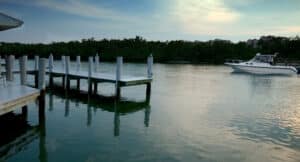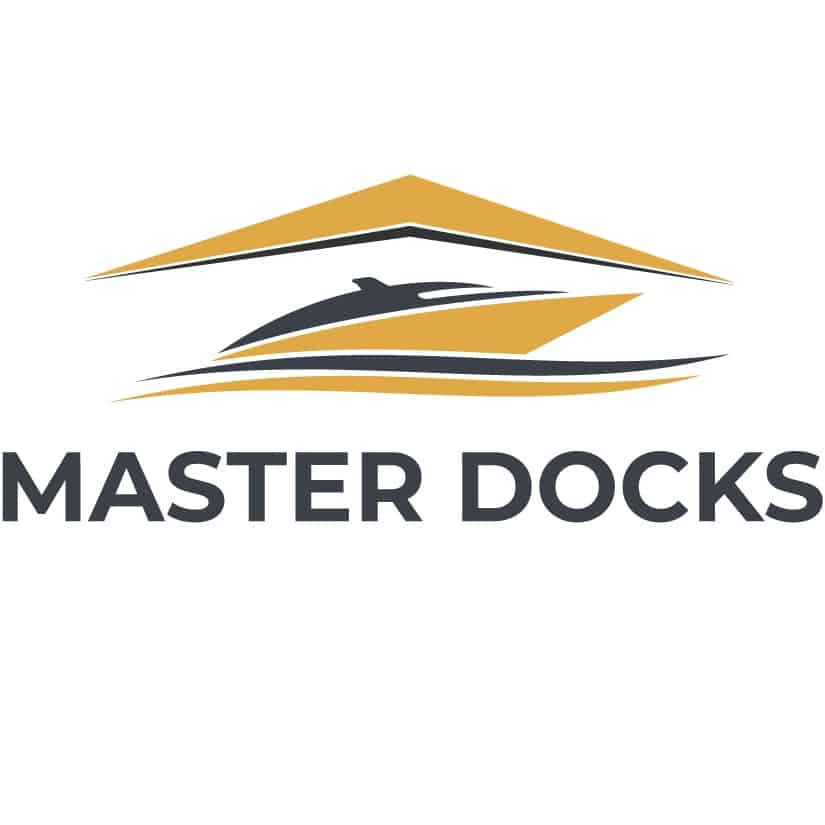
What is the difference between a floating boat dock and a fixed boat dock?
Floating Docks
First of, a floating dock is a type of dock that moves up and down with the water level. This is great so that you are always at the water level. A floating dock is quicker to install than a fixed dock. It does not require a large amount of concrete, pilings and it can be prebuild at a fabrication shop. The crews do the assembly at the boatramp, that way there is minimal activity at the house. Floating docks are ideal for high water fluctuation. They are also pretty much the only option when the lake is really deep. When the water goes down a lot, like at lake Hartwell, you can “Chase” the water with a floating dock. One potential disadvantage of a floating dock is that it moves up and down with the waves. This can be a concern if you plan to use the dock for activities that require a stable surface. Smaller floating platform docks are typically build out of wood to keep to cost down. Once docks get bigger, or have a roof structure they are typically build out of aluminum or steel. Master Docks is an expert in building any type of floating dock.
Fixed Docks
If you want a permanent structures anchored in the ground with pilings or concrete a fixed dock would be the way to go. Fixed docks use wood, steel, concrete or aluminum pilings to build the dock on. It is typically more stable than a floating dock, and can withstand larger waves and stronger currents and is typically great for large bodies of water like the ocean. However, fixed docks can be more difficult and expensive to install, depending on the lake bed. They require more construction materials, labor and time.
Piling Materials
When you build a dock you have to evaluate material quality and cost versus longevity, maintenance and beauty of the boat dock.
- Pilings can be made out of wood, concrete, steel, aluminum or fiberglass.
- Wood is the most economical material and most widely used. There are round pilings and square pilings. Round pilings are easier to align then square pilings. All wood will need to be water contact or salt water contact treated.
- Concrete is typically used to commercial applications, or very deep water levels. Concrete is also an expensive option.
- Fiberglass pilings are the latest development and are great for building a forever dock. Fiberglass pilings are more expensive than wood pilings.
- Steel pilings are a great option for fresh water applications. Steel pilings are strong and cost effective. Having them galvanized will ensure a longer life span. Being steel they will eventually rust.
- Aluminum pilings are an overall great option, they look great and last long. Aluminum pilings are more costly though, but they will not rust.
Float Materials
Floats can be made out of different types of materials.
- Plastic or Steel barrels. Plastic or Steel barrels are a cost effective solution, the disadvantage is that they are hollow and will sink when penetrated.
- Styrofoam blocks. Styrofoam block are excellent for floatation, but they can deteriorate and the styrofoam can get eaten by wildife or get into the water system. Most lakes do not allow styrofoam floats.
- Rotomolded foam filled floats. These are coast guard approved floats, they are filled with foam. The foam ensures that the structure will not sink when penetrated. You will lose some of the buyoancy but they will still float.
Dock Frame Materials
Dock frames are build on top of pilings or in case of a floating dock on top of floats.
Some things fixed docks and floating boat docks have in common:
- Boat Docks have a life span of up to 30 years. The higher quality materials you use and the better the workmanship the longer the dock will last.
- You might need a permit because most all of the lakes are regulated either by the utility companies or Corps of Engineers.
- Most lake rules require permits that have to be approved by lake management before you can install a boat dock or boat lift.
- Counties might have their own requirements for building permits which would be in addition to the Lake requirements.
- Docks are building structures and most of the times a structural drawing signed by a Professional Engineer is required.
- Dock materials can be the same. However floating dock structures are typically build out of steel and alumimum, where as stationary docks are typically build out of wood.
Conclusion
Ultimately, which type of dock is best for you will depend on your specific needs, budget, water situation and lake management rules. Both floating and fixed docks have their advantages and disadvantages, so it is important to do your research and consider all of your options before making a decision.

